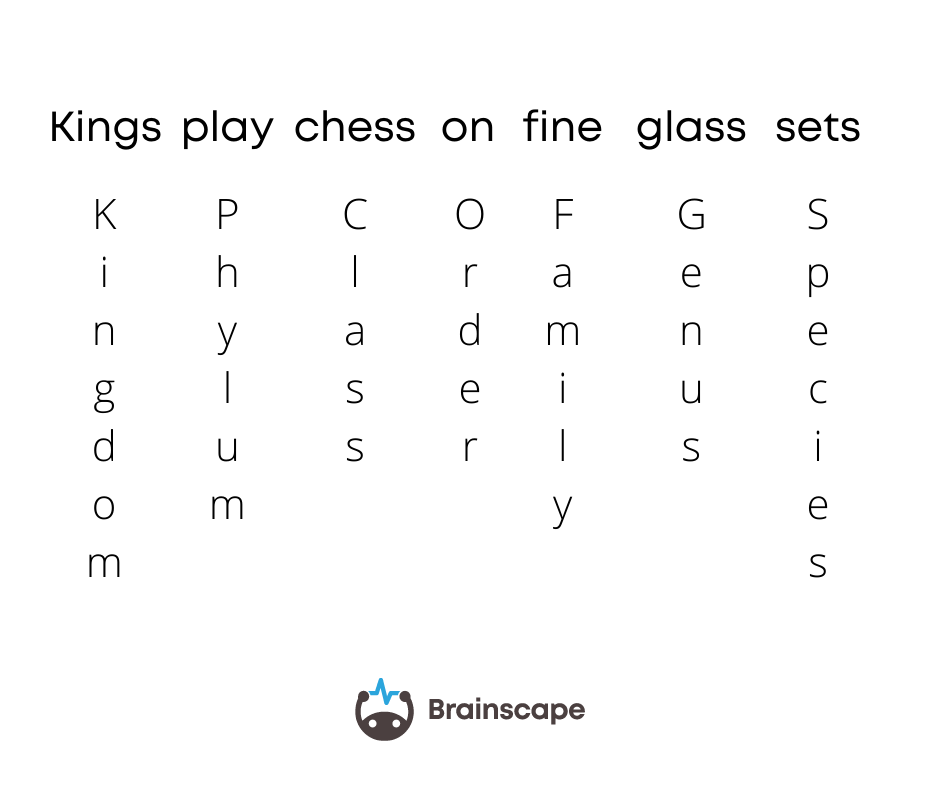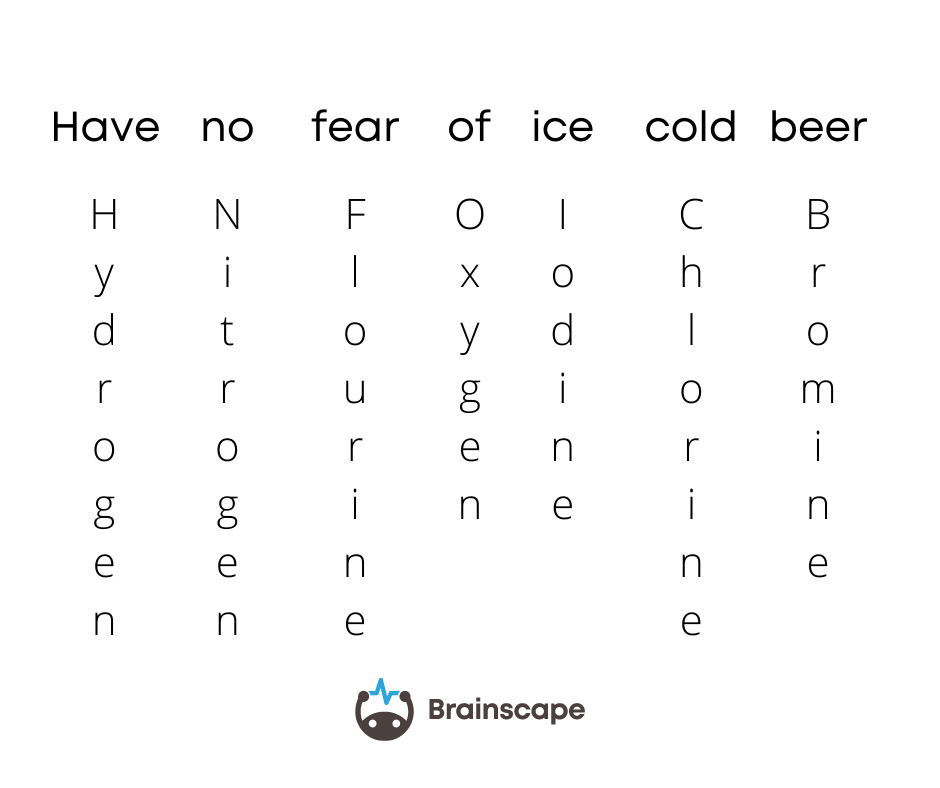One of the most reliable techniques for memorizing information is mnemonics: patterns of letters, ideas, sounds, or associations designed to make learning easier.
The simplest example? The alphabet song. Nearly every child learns their ABCs through song, and chances are, you still remember it today. That’s the power of mnemonics—they help cement information in your brain in a way that sticks.
But while mnemonics can be a game-changer for recall, they also require learning yet another layer of information on top of everything else you’re already studying. So, are they worth it?
In this article, we’ll weigh the pros and cons of mnemonics—and whether they deserve a place in your study routine! (Short on time? Watch the following video instead...)
Using Mnemonic Devices for Learning
The roots of mnemonic devices as a memorization technique stretch back thousands of years. The ancient Romans and Greeks knew and valued mnemonic techniques, practicing them to ease the demands of poetry recitations, public speaking, and other tasks.

Basic mnemonic memorization revolves around associations.
The most basic mnemonic devices in the English language include the alphabet song, as mentioned above, and ROYGBIV, the acronym for the colors in the rainbow (red, orange, yellow, green, blue, indigo, violet). Another common mnemonic is the phrase “i before e except after c,” which encodes spelling information, although there are many exceptions to this rule ("my weird niece seizes protein and caffeine").

The Mind Palace
Cicero, the famous Roman writer and orator, writes in his book De Oratore (55 BCE) of a memory aid called the “method of loci,” or the “mind palace” technique. Here, a person uses their spatial reasoning brain power to organize and store memory inside an imagined building or geographic space.
It’s a process that gained some notoriety in recent years due to the BBC show Sherlock, which features a young savant Sherlock Holmes using the mind palace technique to recall vast quantities of information that assist him in solving complex and diabolical crimes.
To build a mind palace, a person begins with the blueprint of a physical location (a room, building, or even a town or landscape). The larger or more detailed the location, the more data can be stored there. Then, they create a path through the location that they can follow during every “visit” and begin to associate objects or landmarks in the mind palace with specific pieces of information.
The Caution with Mnemonics
For people who have to memorize and store a huge amount of new information, like people studying for medical school, law, or a foreign language, the techniques of mnemonics can be invaluable. As the alphabet song demonstrates, even the simplest lessons can benefit from these methods.
However, it's important to weigh how much memory the mnemonic adds, as well as whether the initial concept was really that difficult to warrant the added burden.
For example, one common medical mnemonic to remember that the word "gastric" refers to the stomach is to imagine a big ol' stomach sitting on the bed of a "gas truck". That's a cute image, but seriously, is the word "gastric" really that hard to remember? Even I knew that word, and I didn't take much more science than college Biology myself.

Some things just aren't that hard to remember, and you can likely get the job done faster with regular old-fashioned repetition.
FAQ: Do Mnemonics and Other Memorization Techniques Really Work?
Do mnemonics really work?
Yes, mnemonics can be very effective, especially for short-term memorization or remembering lists, sequences, and tricky concepts. They work by connecting new information to familiar patterns. That said, their usefulness often depends on how complex the material is and how frequently you’ll need to recall it.
What is the most effective tool for memorization?
While mnemonics have their place, most cognitive scientists agree that spaced repetition combined with active recall is the gold standard for long-term memorization. Tools that use these techniques, such as adaptive flashcard platforms, are backed by decades of learning science.
What is the 7 3 2 1 study method?
The “7-3-2-1” method is a basic manual take on spaced repetition. It refers to reviewing material today, tomorrow (2 days), the next day (3 days), and then in a week (7 days). While not as precise as an algorithmic SRS, this type of timed review can help reinforce memory when applied consistently.
Do geniuses use mnemonics?
Absolutely. From competitive memory athletes to brilliant scientists, plenty of high-achieving learners use mnemonics to retain complex or abstract information. But what really sets them apart is how they combine strategies, like layering mnemonics on top of spaced repetition and deep understanding.
Spaced Repetition Beats Mnemonics Any Day
While it's true that our brains are heavily visual and adept at creating such associations as "memory palaces", it's also true that the real way we learn is by the stress placed on neurons during retrieval practice. Brain cells grow when we attempt to remember something that is just at the fringe of our zone of proximal development.
This is why flashcards are so effective when used correctly. They allow us to break learning into its individual learning objectives where we have to retrieve the answer in our heads, using active recall. Then, we're able to assess our own knowledge in the flashcard to determine how soon we need to review it again.
Even if you use mnemonics or a mind palace, you need spaced repetition to retain them. It's more efficient to use this repetition on just the content rather than additional packaging.
The systematic pattern of spaced repetition has been shown to be the single most important factor in how well we remember something.
Using a spaced repetition system (SRS) like Brainscape – with web and mobile flashcards that repeat in optimal interviews according to your confidence ratings – helps you to learn twice as fast as other study techniques and at a fraction of the added mental overhead.
So get to work, make yourself more motivated to study, and learn faster than ever with Brainscape, the ultimate study weapon!
Additional Reading
- The Importance of Memorization in Learning
- How to memorize vocab words and build your vocabulary
- Do "Drill and Practice" Instructional Strategies Work in Education in 2025?
Sources
M. Patten, B. (1990). The history of memory arts. Neurology, 40(2), 346. https://doi.org/10.1212/wnl.40.2.346
Pedersen, T. (2022, March 31). Memory and mnemonic devices. Psych Central. https://psychcentral.com/lib/memory-and-mnemonic-devices
Qureshi, A., Rizvi, F., Syed, A., Shahid, A., & Manzoor, H. (2014). The method of loci as a mnemonic device to facilitate learning in endocrinology leads to improvement in student performance as measured by assessments. AJP Advances in Physiology Education, 38(2), 140–144. https://doi.org/10.1152/advan.00092.2013
Washington University in St. Louis. (2022, August 10). Using retrieval practice to increase student learning - Center for Teaching and Learning. Center for Teaching and Learning. https://ctl.wustl.edu/resources/using-retrieval-practice-to-increase-student-learning/
